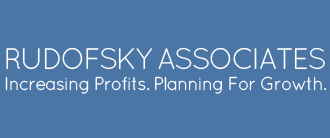Last week, I was a guest speaker again at the Kauffman Fast Trac program, speaking on Pricing Strategy. As I told the twenty or so Growth Ventures students, the costs for your products or services typically are the basis for establishing a floor you don’t want to price your product or service below. It pays to know the gross margin which is typical for your industry, so you can set your pricing at a level sufficient to achieve the gross profit needed to make your business sustainable. How to have an accurate understanding of your costs is a big topic unto itself. If you are including some allowance for material losses (for product manufacturers) and for unabsorbed labor during low sales periods (for both product manufacturers and service providers) these are good indicators that your cost analysis is fairly complete.
It also is important to have a feel for the ceiling which you should not price above. To some extent this is determined by the existing players in the marketplace for your product and service. That said, if you have a clear edge in perceived quality, delivery, service or some specific product features, this will provide opportunity to price above competition. (For example, Terra Chips was first launched at a price of $8 for an 8 oz. bag, but it was a totally unique product.) But if you have a “me-too” product, and price much above the going rate, consumers may feel your pricing is unfair and shun your brand.
So suppose you have determined your pricing floor, and your pricing ceiling, as discussed above, how then to decide on the exact pricing point for your product or service? This was the balance of what I discussed with the Fast Trac class.
For businesses where there is a fair amount of uniformity in pricing, it is important to consider what is the gross margin being realized under the current pricing. As two extreme examples, consider a business realizing 50% gross margin and a second one realizing 20% gross margin under their current pricing. In most cases the 50% gross margin business should look to sales increases to drive profits, since any attempt at further pricing increases may be counter-productive, as customers leaving the franchise could offset any profit gains on those who stay and accept a further increase. Conversely, the 20% gross margin business should typically look to increase prices; as it is rare for a business with such low gross margin to be sustainable. In between these two extremes, the key is for business owners to know or determine the price elasticity of demand for their product or service, to make an informed decision on when and how much pricing to consider.
Finally, for businesses where there is little uniformity in pricing, differentiation is a key to improving results. This can be based on consumer demographics, location, time of purchase, purchase quantity, or many other attributes.
——————————————————————————————
If you are interested in receiving a PDF version of the Pricing presentation, send me an email at David@RudofskyAssociates.com, with a brief description of your business.


